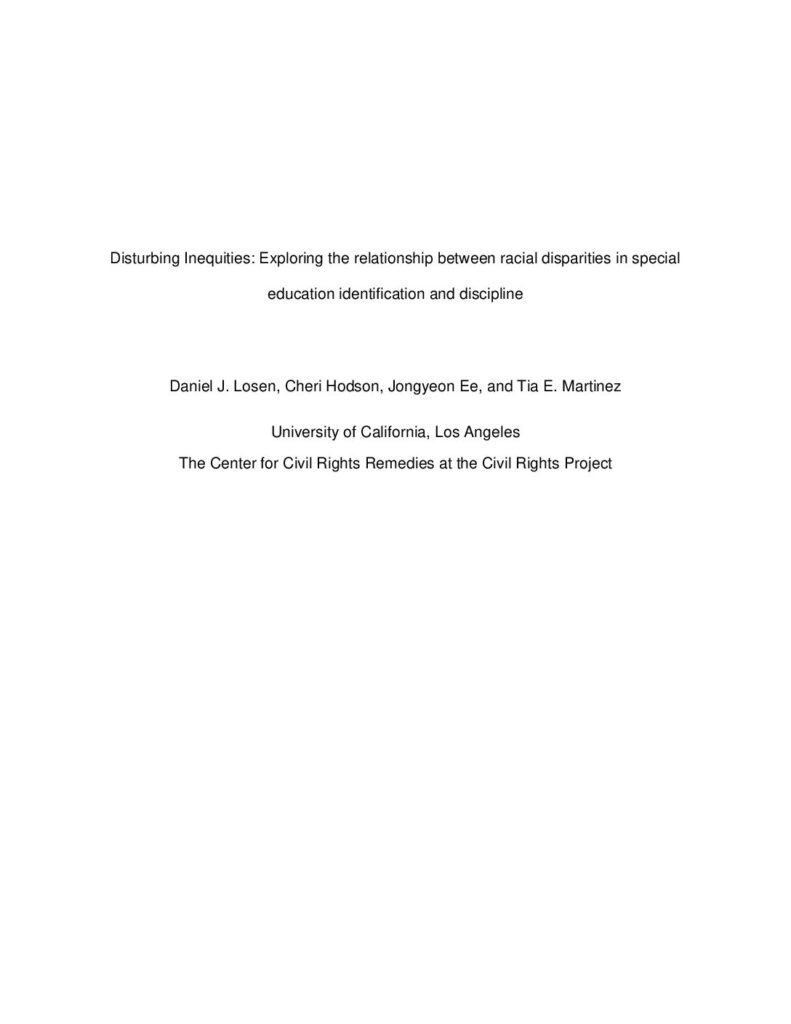From the Introduction
Students with disabilities are entitled by law to receive special education, which includes individualized supports and services, including behavioral supports if needed, to help them succeed in school. So it is especially disturbing that nationally, in 2011-12, their out-of-school suspension rate for grades K-12 was more than twice as high as their nondisabled peers. They are also more likely than their non-disabled peers to be suspended repeatedly.2 Furthermore, in 2011-12, across K – 12, the rates were much higher for students with disabilities who were Black and male, with one out of every five having been suspended at least once.
The data from different school levels (elementary, middle, and high) reveal even deeper disparities. For students with disabilities, the risk for suspension at the elementary school level is 4.1%. This rises to 19.3% at the secondary level.3 While students with disabilities are about twice as likely as their nondisabled peers to be suspended at each level, the 2 percentage point gap at the elementary level increases fivefold at the secondary level to a 10 percentage point gap. When we look at the intersection of race, disability, and gender at the secondary level, we find that 24% of Black secondary students, 31% of Black secondary school students with disabilities, and 36% of Black secondary school males with disabilities were suspended from school in 2009-2010.
It is worth noting that these national averages mask even more extreme situations. For example, using U.S. Department of Education data for the 2009-2010 academic year, of the 1,136 U.S. school districts that have at least 50 Black males with disabilities, 211 had suspension rates for Black males with disabilities at the secondary level of over 50%. These are averages for large districts, which means there are individual schools in each of these high-suspending districts with even higher suspension rates.
In compliance with the UC Open Access Policy, this report has been made available on eScholarship:
http://escholarship.org/uc/item/9rw655w8

